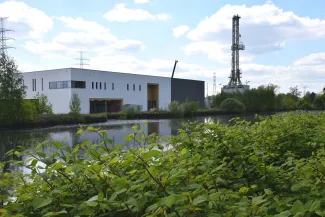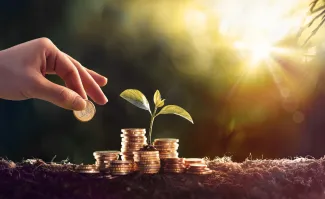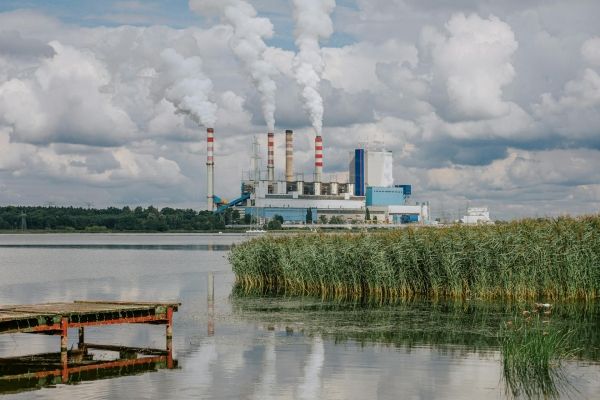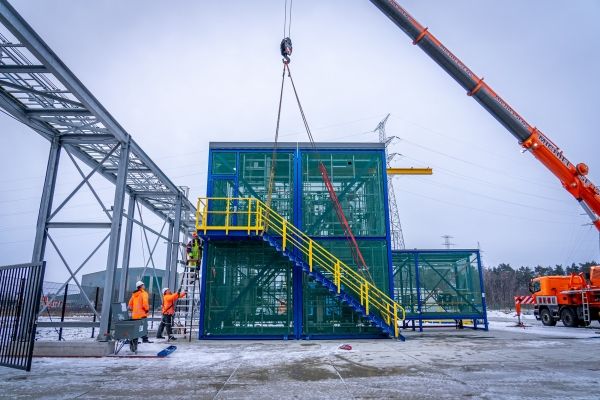
Geothermal power plant
The development of a geothermal power plant follows a structured process, where each step includes specific conditions to increase the likelihood of success. This approach allows the geothermal potential of a project to be calculated in a systematic and cost-effective manner. Success is achieved when a sufficiently high flow of water is found, with a temperature that is high enough.
Development process
In the first phase – the exploration phase – calculations are mainly based on models and surface observations (such as seismic data and temperature measurements). When these are confirmed by an initial test borehole, the chances of success increase. The project then moves into the development phase, as full certainty is only achieved when the entire system is up and running.
Different phases
Exploration phase - Key questions
- What do you want to use the sustainable heat for?
- What is the average and maximum heat demand (capacity)?
- How does the heat demand fluctuate throughout the year?
- Does the heat demand remain constant over long periods?
- At what temperature do you want to integrate the heat into your installation or building?
Exploration phase - Research process
- This phase involves the initial screening of the local geological potential (temperature, capacity) as well as a comparison of the potential with the heat demand.
- Next, a feasibility study is conducted to refine the data from the first screening. This helps assess whether the development of geothermal energy is worthwhile. The study can also help minimize certain risks related to the underground conditions.
It is possible that at this stage, it is determined that the knowledge of the underground is insufficient to reliably estimate the geothermal potential. In such cases, further research is needed, such as seismic studies.
Development phase - Preparation
Basic design & financing
- Design of the drilling operations, surface installations, and refinement of the investment costs for the project.
- Refinement of the business model based on the adjusted investment costs.
- Financing of the project (equity, subsidies, insurance, loans).
- Application for necessary permits.
Preparation of work
- Site preparation.
- Tendering for drilling operations.
Development phase - Drilling operations
- Performing the drilling operations.
- Testing the boreholes.
Development phase - Completion
- Selection or design of the source pump and primary heat exchanger.
- Detailed design of the surface installations.
- Application for environmental and construction permits.
- Construction of the surface installations.
Costs of developing a geothermal power plant
The timeline and costs for developing a geothermal power plant depend on the level of knowledge about the underground conditions. If there is limited knowledge of the deep ground layers, an exploration phase is carried out using seismic or other geophysical methods.

Biggest costs at a glance
Depending on the complexity, the condition of the underground, and the experience with deep drilling in the region, the various aspects of drilling represent the largest costs of the project.
- Design of the boreholes/installation
- Site preparation
- Application for necessary permits
- Mobilization of drilling equipment
- Inspection of the site and equipment
- The drilling itself
The overall costs, including the cost of building surface installations, depend on the intended application:
- Heat supply?
- Cold supply?
- Electricity?
And what is already available:
- Is there an existing district heating network?
- Is this network suitable for the temperatures supplied?
- Are modifications needed for the pipes leading to and from the boreholes?
- Is system optimisation needed (e.g., ground heating, air treatment units in greenhouses)?
If a completely new network needs to be built, this will naturally increase the investments required.
Conclusion
The development and associated costs of a geothermal power plant are high, but the operational costs are lower compared to, for example, a gas-fired heating system. The greenhouse gas emissions are much lower, which has ecological benefits.
Additionally, there are various support measures provided by the Flemish Energy Agency (VEA) that can be accessed.



